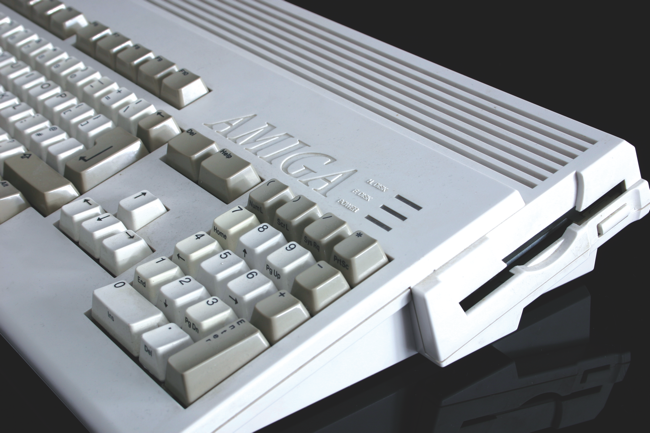
Most software developers, DBAs and sys admins will have a favourite computer (and many people who aren’t in those 3 categories, such as artist and musicians). A machine they grew up with, cut their teeth on, allowed them to get creative, and had them poking about the innards trying to learn how everything worked. For me, that machine was the Amiga. A machine that revolutionised the home computing world and seemed poised for world domination. Instead a series of poor decisions led to it’s demise…
In my lifetime, I have had 5 Amigas: 2 Amiga 500s. The first one died and was replaced. But we got one with 1MB memory, rather than 512k (result!). 2 Amiga 1200s, one was modded in a tower case, and an Amiga 1500. No other machine made me as productive, or enjoy using a computer as much this family did. Sure, there were some flaws, and Commodore made blunder after blunder but, with a massive software base, and very active community there was plenty to keep me occupied, or learn new things with. This is my little love letter to the Amiga. Most of it as I remember, so may not be entirely accurate. But what historical write ups are? 😉
The Amiga 500
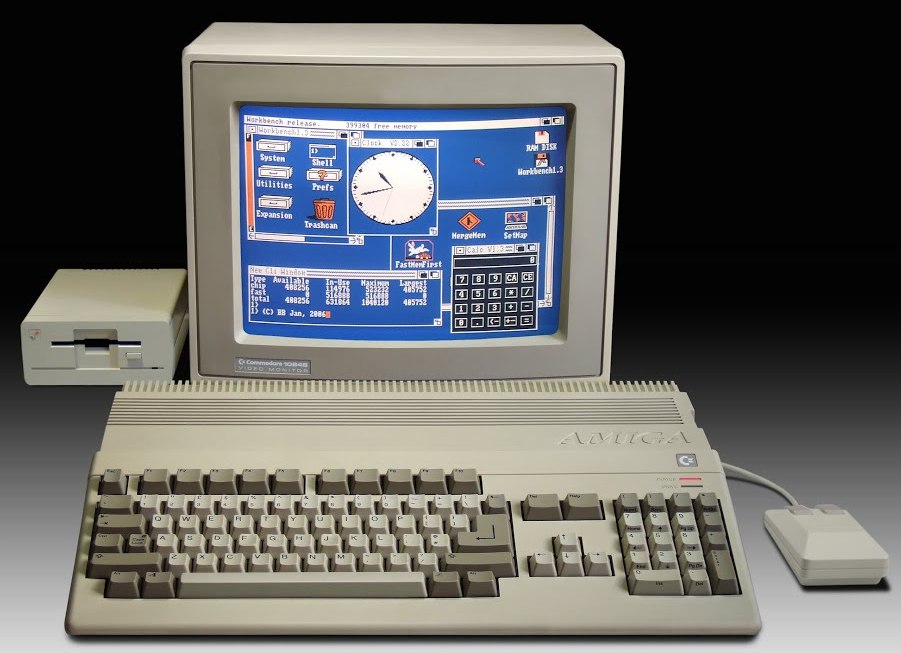
The Amiga 500 wasn’t the first Amiga. That honour goes to the Amiga 1000. It was, however, the Amiga that first made an impact on the home market -in part, thanks to the Commodore UK’s ‘Batman’ gaming pack. A superb bundle capitalising on the success of the first Tim Burton Batman film, with Ocean’s release of the game. It also included the excellent flight simulator F-18 Interceptor (a right of passage, for all Amiga 500 owners, was flying under the Golden Gate bridge with afterburners at full pelt), delightful platformer, The New Zealand Story, and the ubiquitous art package, Deluxe Paint 2. Workbench 1.3 came with a variety of things to keep you entertained. The text to speech program ‘Say’ being one of them. Trying to make your Miggy sound like a chipmunk was hours of hilarity in itself. Hey, back then we didn’t have smartphones to spend hours staring at and doing nothing with! The Amiga 500 went on to be the best selling of the range, and the most remembered. Unfortunately, its success was also part of its downfall, and the Amiga was seen more as games machine than a serious home computer. The Amiga 500+ was released, a few years later, with incremental upgrades and Workbench upped to v2 but, overall, not a huge difference.
Amiga 1200
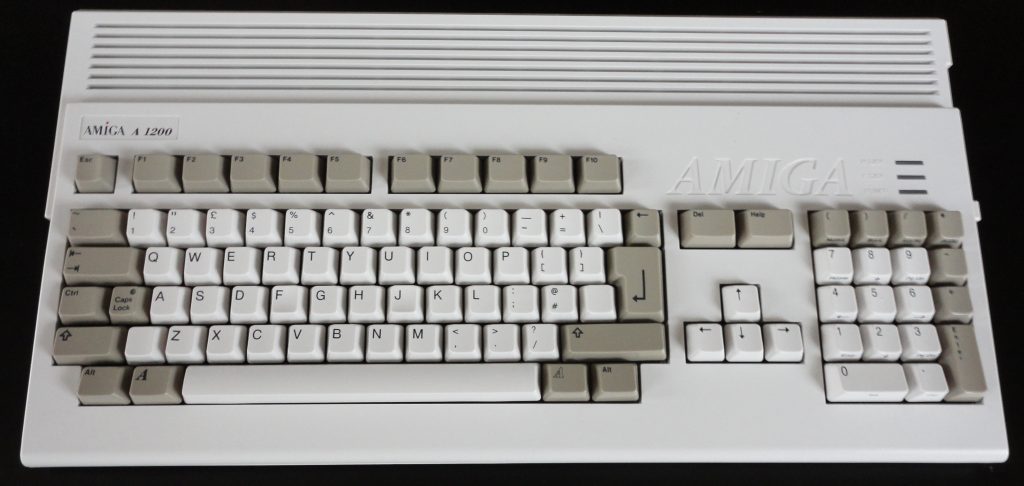
The Amiga 1200 was the true successor to the A500. Pretty much everything, bar the sound (more on that later) was improved upon. The CPU was upped to a 68020 at 14mhz. Chip RAM was increased to 2MB (no Fast RAM though). It came with the A4000’s AGA chipset, which allowed for more colours on screen. Workbench was version 3.0. It also came in a familiar all-in-one housing, akin to the A500/600. It had built in IDE but the base model had no hard drive as standard. It also came with a proper trapdoor socket that allowed for RAM upgrades, CPU expansion sockets. Even a Zorro card busboard could be attached on, if you converted it in to a tower case, for even more expansion options.
The improvements weren’t really enough though. It should have had more memory, from the outset, and not the cut down ‘EC’ version of the 68020. On that note, the 020 was already 8 years old. Imagine launching a new machine with an 8 year old processor, in these day and age.
The Curious Case of the Amiga 600
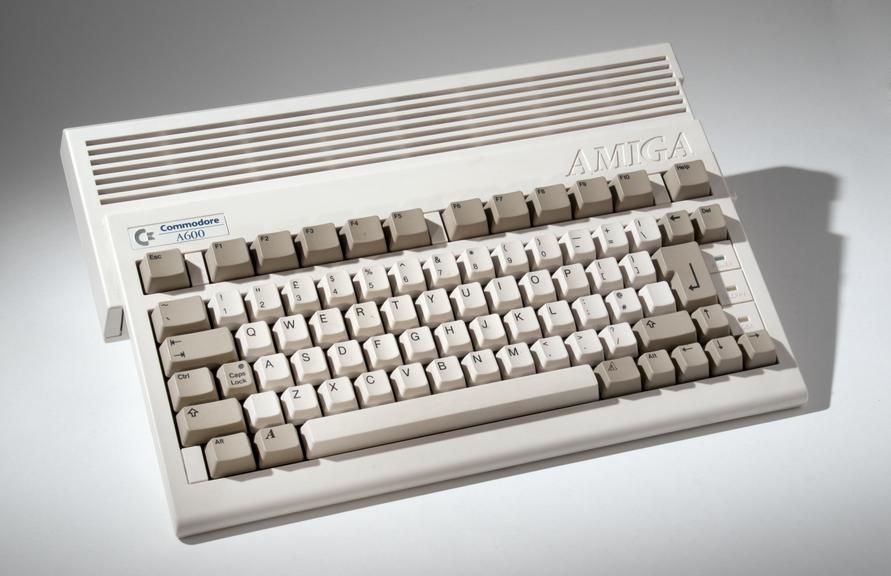
The Amiga 600 was certainly an oddity in the Amiga family. The most obvious being it’s the only one to not have a number pad (discounting a CD32). Whilst this reduced the size of the machine it also broke compatibility with games that required it. Also, due to it’s design, features and model number, it appeared to be a cut down version of the forthcoming Amiga 1200, itself already a cut down version of the big box A4000. It certainly shares some features of it’s bigger brother; the PCMCIA slot and built in IDE port. However, it came with Workbench 2.05, rather than 3.0, the ECS chipset, which was not as capable as the AGA chipset in the A1200 and, once again, the CPU driving it was a 68000 at 7mhz, the same power plant as an A500, and 1MB Chip RAM. Even more heinous, the expandability options were limited due to a trapdoor slot that was far less versatile than the Amiga 500/1200. CPU upgrades had to be modded on the motherboard itself. There was very little reason in getting one over an Amiga 500 or 1200, unless you really needed the space, and no reason to ‘upgrade’ from an A500. But many users do love the Amiga 600 for its unique selling points. I doubt I’d say no, if I were offered one now, to be honest.
One enterprising individual did make a portable Amiga, out of an Amiga 600 base. The results of which made for an interesting CU Amiga article. But I believe it would have needed to be plugged in to the mains, at all times, which made it not quite as portable as hoped. Good effort, though.
The Big Box Amigas
Despite the Amiga having better success in the home market, there were several workstation Amigas designed for commercial use. This is how Commodore Business Machines (clue is in the name) envisaged the Amiga family initially, before it found it’s place in the home. These were the Amiga 1000, 2000, 3000 and 4000. There were variants, such as the A1500, a cut down A2000 for the UK market, because British folk don’t like hard drives, apparently, but these were the base models. Unlike the home range, these machines did see decent upgrades in the CPU and RAM, at least, with the Amiga 4000 boasting 68040 and 060 CPUs in it’s final flavours. However, the high prices made them fairly prohibitive to a casual user.
Whilst the A4000 could almost be considered to be the last word for Amiga, it had several design flaws, and some features which were considered downgrades from the A3000. As such, if you have no need for the AGA chipset capabilities, the A3000 is arguably considered to be the Ultimate Amiga, amongst the community.
The most famed use of the big box Amigas is as the basis of the NewTek VideoToaster systems. TV and Film studios could get these in and do things at a fraction of the cost of other solutions of the time. These systems were renowned, throughout the 90s, for easily adding special effects to video and instrumental in TV shows such as Babylon 5 and SeaQuest DSV. It was used in the initial design stages of Jurassic Park . It also gave birth to Lightwave, a powerful 3D modelling/rendering program, used in the aforementioned productions. Where the Atari ST found it’s place in the recording studio, the Amiga was at the centre of video studios.
As an aside, it’s a real shame their was no real midrange offerings of Amigas. A machine halfway between an Amiga 1200/4000 with a base model of 68030, Zorro slots, more RAM and a hard drive for around £1000 may have given the Amiga a different future. But there wasn’t and, as a result, you either had to buy a ludicrously priced big box Amiga or one the low end models and expand it. Neither of which suited the growing ‘multimedia’ movement of the 90s. A strange oversight by Commodore… but they were good at that.
Amiga 1200/4000 Rerelease.
After the purchase of the Amiga brand, by Escom, who formed Amiga Technologies GmbH, the Amiga 1200 and 4000 went back in to production again. If the Amiga 1200 was already outdated when Commodore relaunched it, then AT really dropped a bollock with their version. Essentially, it was no different, save for Workbench being upped to 3.1 and the floppy drive being a mangled high density drive that couldn’t load high density disks and broke compatibility with a lot of games. But the CPU and RAM remained identical. This would have been a time for an A1200+, or A1400. At mimimum, a 68030 processor, at 25mhz should have been built in, yet even that was a 7 year old CPU, at this point. Whilst a 68040 would have been even better these suffered from heat issues and probably would have been too expensive for where the A1200 wanted to fit in to the market. The RAM should have had 4-8MB of Fast RAM, to compliment the 2MB Chip RAM, and the base model should have come with a hard drive. Of course, this would have come at a R&D cost, and it may not have been worth that risk for AT, at that time. To their credit, they did bundle a pretty decent productivity pack with it (less said about Whizz, the better), but the Amiga was already looking worn out and this release didn’t help change those perceptions. Microsoft aggressively pushed their somewhat shady strategies, and Wintel boxes cemented their place as the defacto home PC.
The Amiga 4000 got slightly better treatment; it had the option of a 68060 processor. However, the price was ridiculous, for what it was. I recall it was around £2500 in the UK. With IBM compatible Wintel boxes starting to get a grasp on multimedia (we can discuss the absolute horribleness that was the Windows 9x family some other time), and available at half the price, it was never going to reinvigorate the Amiga in either the home or business markets.
Other Variants
The Amiga appeared in a couple of other guises. First of which was the Commodore CDTV. Commodore were trying to get in on the home video market and deliberately omitted the Amiga name from the CDTV. However, essentially it was an A500 in a black box and CD-ROM drive. Interestingly, this is the only Amiga derivative to feature built in MIDI ports. Why a home video system has MIDI ports is mystery. And why this didn’t continue on, with the rest of the Amiga family is also beyond me. To be fair, it wasn’t a bad looking bit of hardware. But poor marketing from Commodore (they were good at that) saw it flop massively.
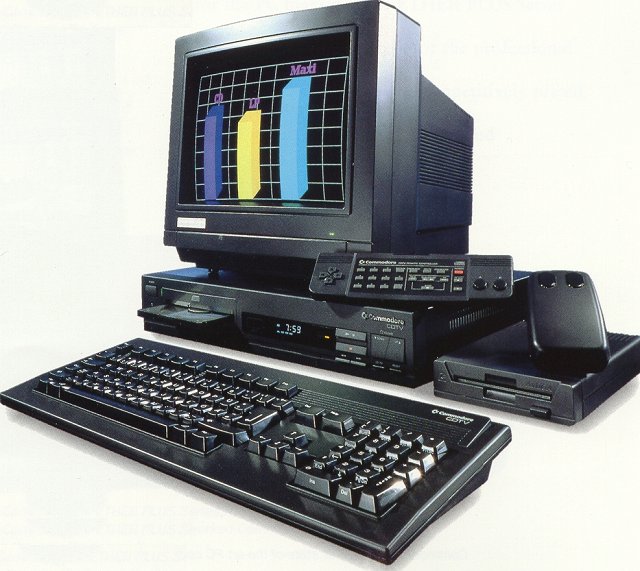
The other guise was the CD32. This time Commodore saw fit to slap the Amiga name on to it. Just as the CDTV was a lazy conversion of the A500, the CD32 was a lazy conversion of an Amiga 1200. Sticking it in a different case and replacing the floppy drive with a CD-ROM drive. The CD32 did have the Akiko chip, which I believe was there to do some 3D work, but given most games would be written using the A1200 as the base, then converted, it never saw its potential. It didn’t help the control pad was some flimsy nonsense that fell apart easily.
But Commodore were myopic (yes… they were good at that). Despite ridiculing Sega, with a pretty devious poster outside Sega HQ stating it would take them ages to be as a good, they didn’t see the Sony Playstation coming, just a year later. The Sega 32X and Saturn were also better, but by then Sega had already started their own journey of completely losing consumer faith. The PSX showed that Amiga’s boasts of being ‘the first 32bit console’, along with Atari’s rubbish of the ‘first 64 bit console’ meant jack shit, in reality. The PSX could throw 3D around in a way that the Amiga and Jaguar could only dream of. You weren’t going to see the likes of Ridge Racer, Wipeout or Soul Caliber on a CD32, Akiko or not.
As ever with the Amiga family it was possible to expand the CD32 to accommodate an 030 processor. A bit of a pointless exercise, really. You may as well have just got an Amiga 1200, if you wanted to go down that route. But hey, the Amiga wouldn’t be what it is without the modding community.
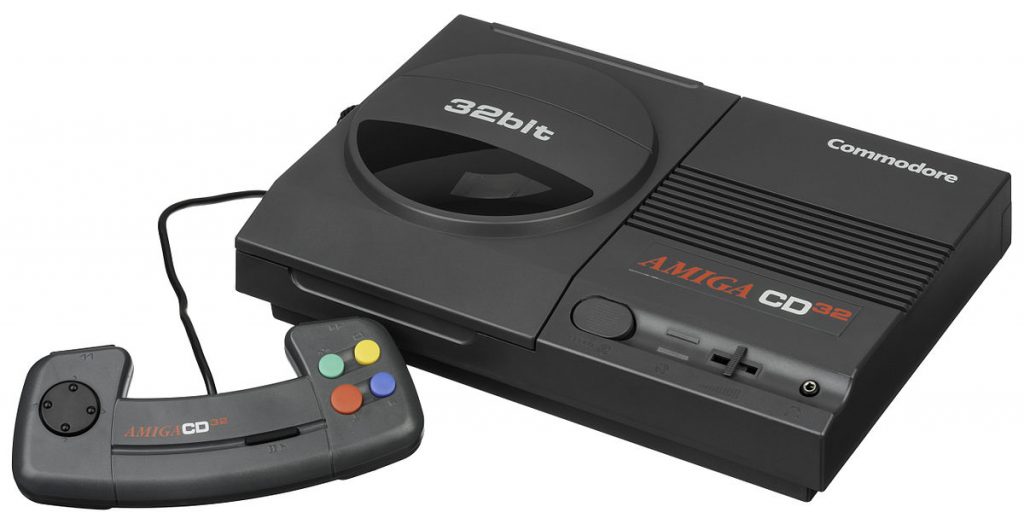
We Need to Talk About Audio
There is one thing common throughout the Amiga family: the audio. Bizarrely, this never saw any improvements and every single Amiga uses the same Paula chip. This is an 8-bit stereo chip, capable of playing 4 channels at a time, at around 28khz. As audio mixing was an intensive CPU process, pretty much all games simply piped sound through those 4 channels, resulting in a hard left and right output, but it meant the CPU could concentrate on the game itself. A worthwhile trade off.
Later software, such as OctaMED SoundStudio made use of sophisticated techniques to mix more than 4 ‘voices’ in to 2 stereo channels. This allowed 14bit audio playback, which was less noisy, and the ability to place sounds inside the stereo image, rather than hard L/R. As stated, this relied on the CPU to perform the mixing, before passing it on to Paula and, due to this, you really need at least a 68030 @ 50mhz to make the most of it. It was possible to do around 12 channels, at 14-bit 22.050khz on a base A1200 but it would start clipping, pushed further.
Then there’s MIDI. The Atari ST came with MIDI ports built in. This allowed it to gain a presence in the studios, and it still finds use today in the industry. In my, obviously biased, opinion the Amiga was a far more capable machine. It certainly was in sound quality. Had it had MIDI built in, it would have no doubt beaten the Atari at this game, too. You could add MIDI to an Amiga but, as per the norm, if it’s not in the base models, it won’t be as supported. As mentioned, the CDTV came with MIDI ports…. so why was this not included in later Amigas? Odd.
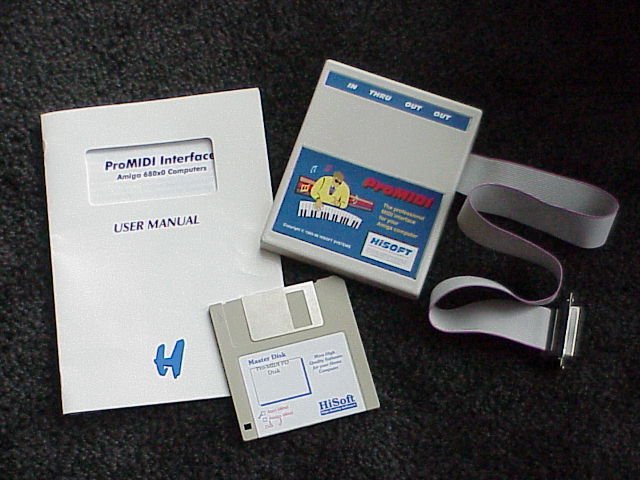
The Community
Despite the light on the Amiga fading more and more as the 90s progressed on, it enjoyed a thriving and very active community base. Magazines, such as CU Amiga and Amiga Format kept the flag flying. As testament to this community, I once remixed a track of final CU Amiga editor, Tony Horgan, and sent it to him. He then burned it to CD and sent me a copy which, back then, was quite a big deal as I couldn’t afford a CD burner (I think they were some £800), at that time, and blank CDs were something like £10 a pop. Listening to the CD was the first time I managed to hear my track in high quality audio. Under his reign the magazine pumped out a load of wonderful features, projects and some cracking software on the free disk/CDs. I believe I owe the CU team a debt of gratitude, for how much it influenced a young me, shaping who I am today. Great software like Imagine, Cinema 4D, OctaMed Soundstudio, Directory Opus, Aladdin 4D, VistaPro, and X-Cad 2000 could be had for nowt, and kept me occupied on those long school holidays. I literally spent hours making tracks in OctaMED Soundstudio. CU Amiga’s cover CDs were crammed full of useful bits and bobs which, back in the day of 56k modems, were a godsend. These days you can download a CD image in a couple of minutes but, in the early days of the internet boom, that would be a few weeks or months of on/off surfing to get that much data.
The Amiga also had an absolutely massive software scene. Whilst the internet was still in its infancy, Aminet was one of the largest software repositories in the world. It regularly released CDs of their archives for those without the luxury of T1 connections in their home. Crammed full of free/share/abandonware it’s invaluable to Amiga and WinUAE users and still going strong today.
With no new Amiga hardware coming from the company themselves, despite various promises, it fell to others to push the envelope, and keep the spirit alive. Phase 5 and Apollo released accelerators; boards with better CPUs, for many of the Amiga range. This meant you could stick a 68060@75mhz, into an Amiga 1200, and up the RAM to 128/256MB. Phase 5 then went one better and introduced accelerator boards that had IBM/Motorola’s PowerPC CPUs built in. These boards achieved speeds far beyond what the 68k range topped out at. Starting with 603/604 CPUs, they later planned to release G3/G4 boards, but Phase 5 went bankrupt which stopped that. An extremely ambitious project, that only had a handful of software readily available to take advantage of it. But through that, Wipeout 2097 and Quake found their way to the Amiga, and were playable. Amiga OS4 supports PowerPC out of the box.
However, all these were prolonging the inevitable. Dwindling sales, the closure of CU Amiga, Amiga Format and, later, Amiga Active saw the community rudderless. The innovation stopped and the dream finally died. Many moved on to other areas. I myself ended up caving in and got my first x86 based machine around 2000/01. Naturally, in the spirit of the Amiga, I didn’t buy one outright; I sourced all the parts and built it up. Which I still do today when needing a new machine.
I myself built an Amiga 1200T (Tower conversion). It was built on a solution from Power Computing, which was pretty elegant, if the box was a little on the huge side. It was a lot nicer than Eyetech’s EZ tower solution, around the same time, which involved hanging the motherboard ‘upside down’, sticking the plastic housing in and pushing cables back in through the back of the case. Sticking Miggys in to towers became the in thing, for a while, but it certainly had its uses. 040/060 accelerator upgrades ran a fair bit hotter than the standard CPUs. The tower allowed for more airflow, and and such, kept things cooler. With the conversion I could easily add a CD ROM drive and hard drive, thanks to a Power IDE interface. I even managed to get a Zorro II busboard, and a couple cards (Retina Z2 graphics card and a Commodore A2065 network card… I think!). I seem to recall I could never get the Retina to work properly, and the monitor kept switching on and off. Plus I never really had anything to network the Amiga up to. But the whole process was still a lot of fun and you got the Big Box feel without spending the entirety of your savings (or paper round money, in my case). I did want to get a sound card but never got round to that, unfortunately. Once I started building Wintel boxes, my Amiga 1200T still found life as a support machine for producing music, and for playing games on, but it was eventually sold in 2007 as I had to downsize. Yes, I regret that.
As I’ve got older I’ve come to appreciate the simplicity of the all-in-one cases, of the Amiga 500/600/1200 and if I can get one of those, with a hard drive and accelerator in, I’d be happy.
Paradoxically, if the Commodore didn’t die when it did, would it have still be as fondly thought of? Would we have got these bizarre hardware upgrades, if Commodore were still pumping out new machines? Would Commodore have become the next Big Evil? A mantle that went to Microsoft, in the 90s, and today the likes of Google, Facebook and even Apple, to an extent, are now suffering. Speculation, of course, but we love an underdog, especially in the UK. The Sega Dreamcast enjoys a similar love, despite being an utter failure that saw Sega exit the home hardware market.
I’m very tempted to get another Amiga 1200 again. A machine with hard drive, 68030, and 32MB would be rather neat to play about with. Maybe even write some software for, so I could really give something back to the community. I do also wonder if the idea of it is better than the reality. Nostalgia is nice, but I have WinUAE and I’m not exactly doing anything productive with that. Just playing about with it and firing up old games. Plus I still don’t exactly have the space for it. I still have a lot of floppy disks sitting in my mother’s garage, some 200 miles away. No idea if they work but I’d like to try. However, just the presence of one would be nice reminder of where I came from, and probably why I’m a software developer today. Never say never.
*Opinions are subjective…
Corrections
Seems I was wrong on there not being a mid range Amiga. Managed to find loads of scans of old CU Amiga magazines. Amongst them a review of an Amiga 4000 (desktop variety) with an 68EC030 processor running at 25mhz, and hard drive, for the decent price of £999. So I take that back, Commodore. But, errr, perhaps better marketing would have been a good idea. Probably still would have been no way of me convincing my Dad to get me one, though.
I also found the CU Amiga review of the Amiga Technologies released A4000T. The 68040 version was available for £2100. Still a pretty pricey box. Especially some 4 years after the desktop A4000 launch, which launched for £1999.
![]()
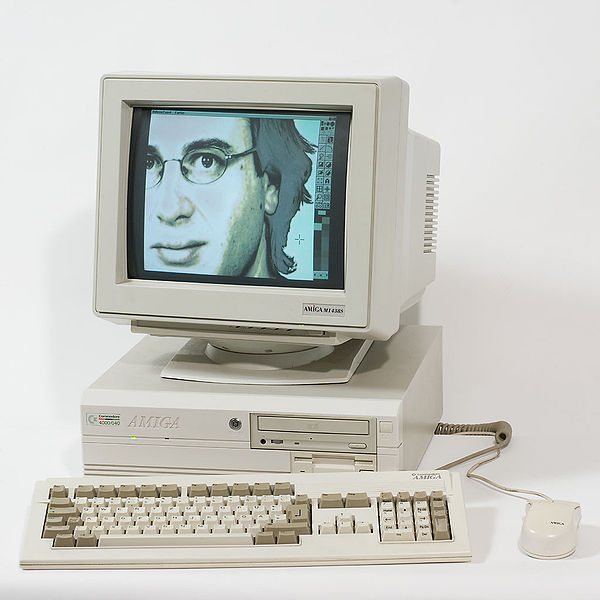
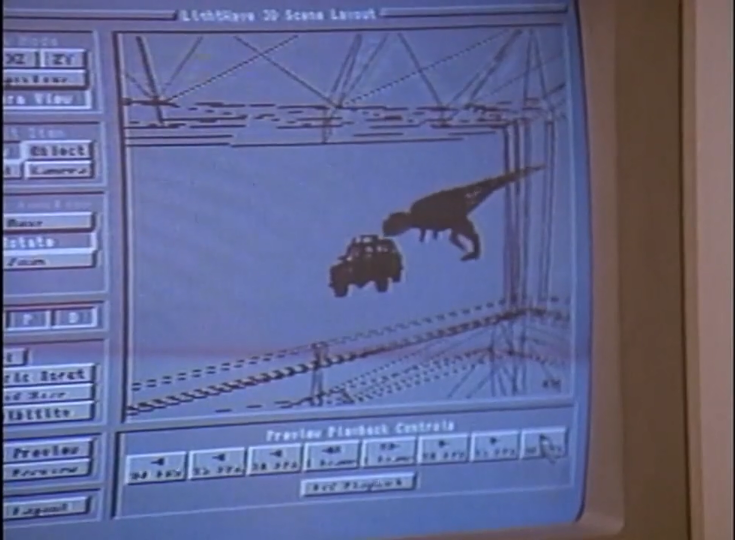
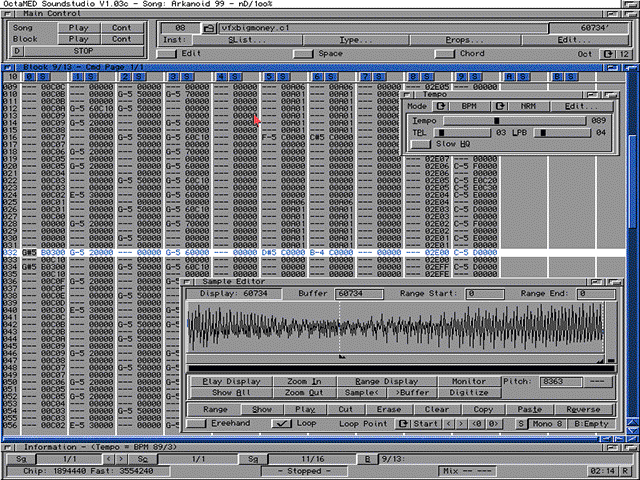
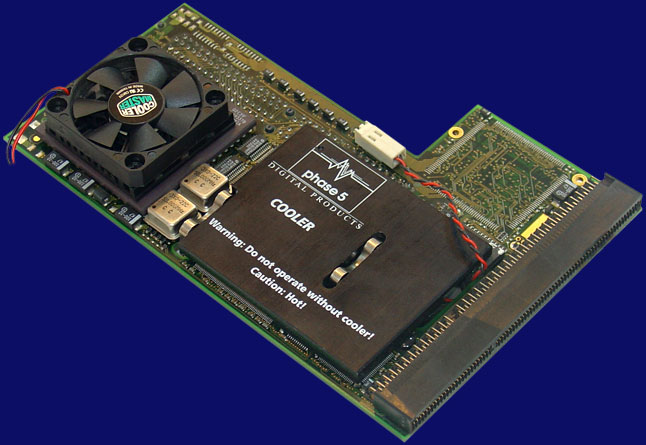
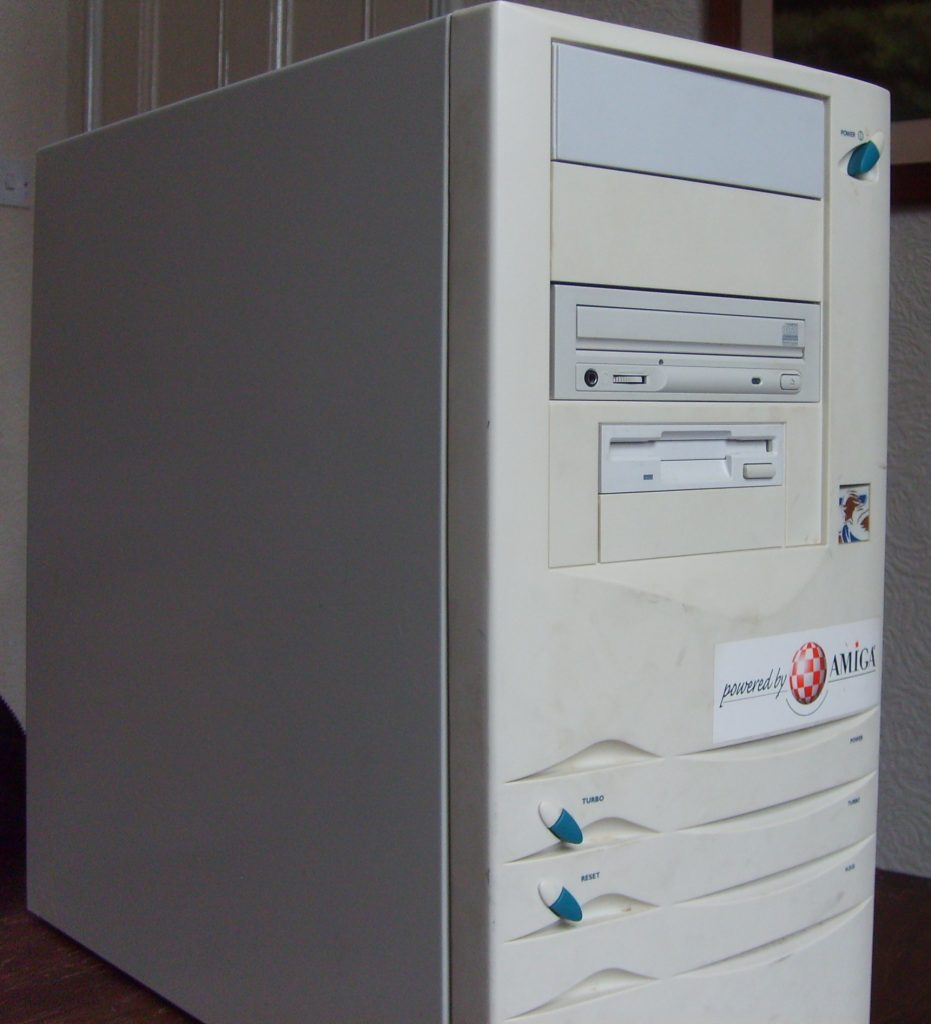
Hi Simon !
I loved my A-500 very much.
We have a similar history about Amiga.
I hated Mehdi Ali (commodore chief) for falling down the company !
with love from Iran
Mr. Classic